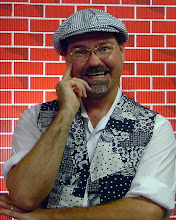“What's in a name? That which we call a rose
by any other name would smell as sweet”
Shakespeare didn’t seem to think names are important, but I tend to disagree. The title of a show is the introduction to the show. First impressions are important. When writing a paper, the heading is what grabs the attention of the reader. The sub heading gives a little more information, but if the heading isn’t interesting, no one will read the paper. It’s the same thing when developing the title of a show. The first thing that an audience will see is the title of a show. Sometimes they will come and see a show just based on that. A show can seem good or bad, just depending on the title.
For example, in my house, I’m the one who cooks dinner. I get tired of cooking the same thing all the time so sometimes I try something different. I told my kids that I was going to make chicken parmigiana.
They said, “Eww! That sounds gross!”
So I said, “Okay, I’ll make chicken spaghetti instead.”
They got excited. They like chicken. They like spaghetti. The two together sounded pretty good to them…. So, I cooked exactly the same meal I was planning all along. I just called it something different.
There are different kinds of shows available in the world of educational entertainment. There are story tellers, puppeteers, singers, musicians, etc. Kids get more excited about some shows more than others. Out of all these shows, the ones with live animals probably get kids the most interested. Magicians probably come in second place. Sadly enough, puppeteers don’t stir a lot of interest. Most puppeteers I know are talented performers and puppetry is a very legitimate art form. But shows like Barney have made people believe that puppetry is just for young children. This is a sad fact that seems to be uniquely American. I actually performed a show once where a sign outside said, “Puppet Show, 3:00pm”… I only had about ten people at that show while most of my shows have at least a hundred. My shows happen to be variety shows with magic, puppetry, and story telling. However, I like to use the word “magic” in the title because that’s what kids are interested in.
This may sound egotistical, but I’m a celebrity. Not a big celebrity, but people do know who I am. During the summer, families will follow me from city to city. I’m always honored when people tell me that they do that. My name is one that people recognize. So it’s important that my name is used in the show’s title.
Sometimes a show’s title can be too clever to be useful. It’s important that a show be creative and original, but if the title is too clever then people might not understand it. For example, the movies “Jaws” and “Star Wars” have really simple titles. Simple is always best. Once people see the show then they can understand what it’s all about. The title is just there to get them in the door.
A show’s title is used to get people interested in the show. The aspects of that show that are attractive should be used in that title. And, simple is always best. So for me, a title like “The Magic of Brett Roberts” works best.












